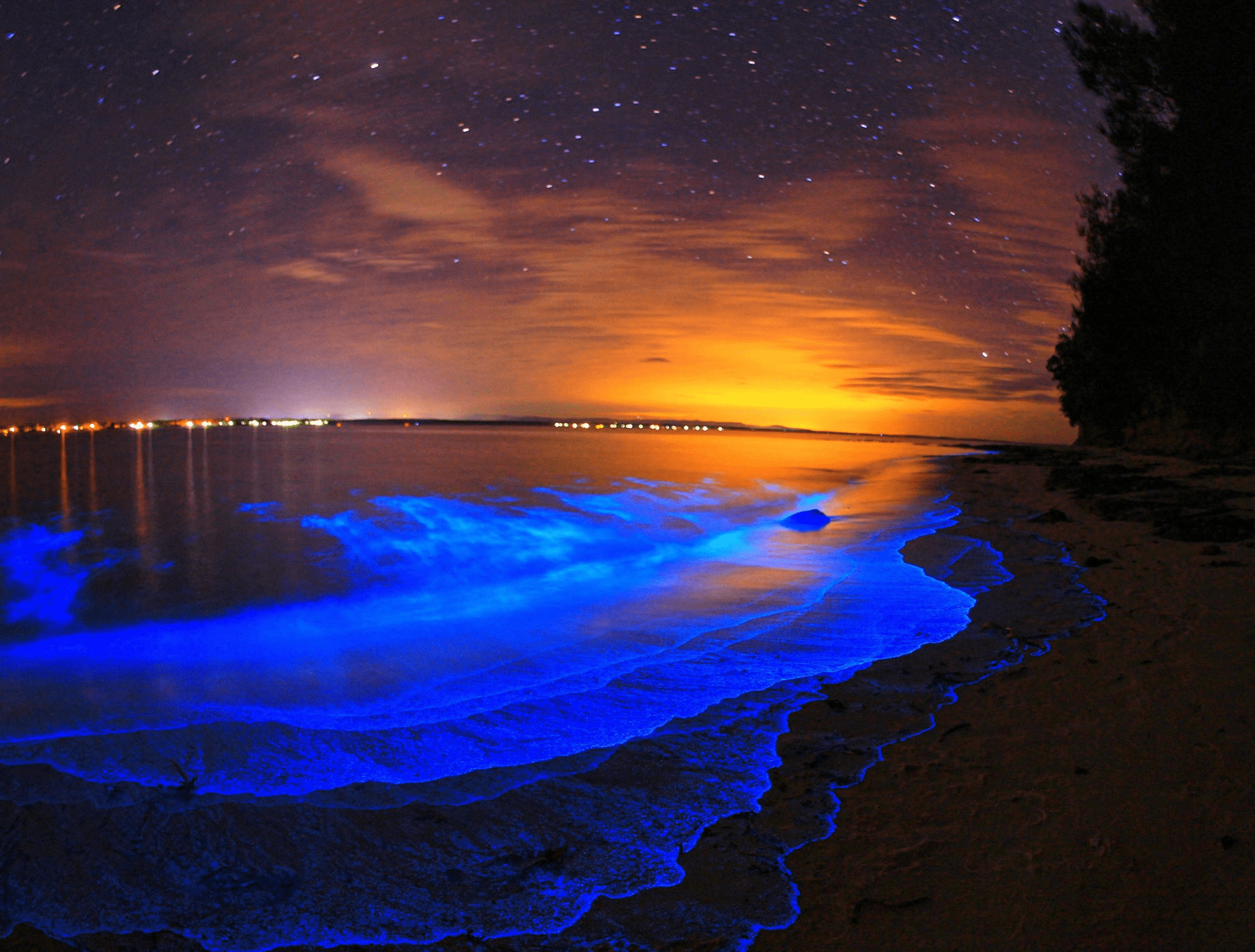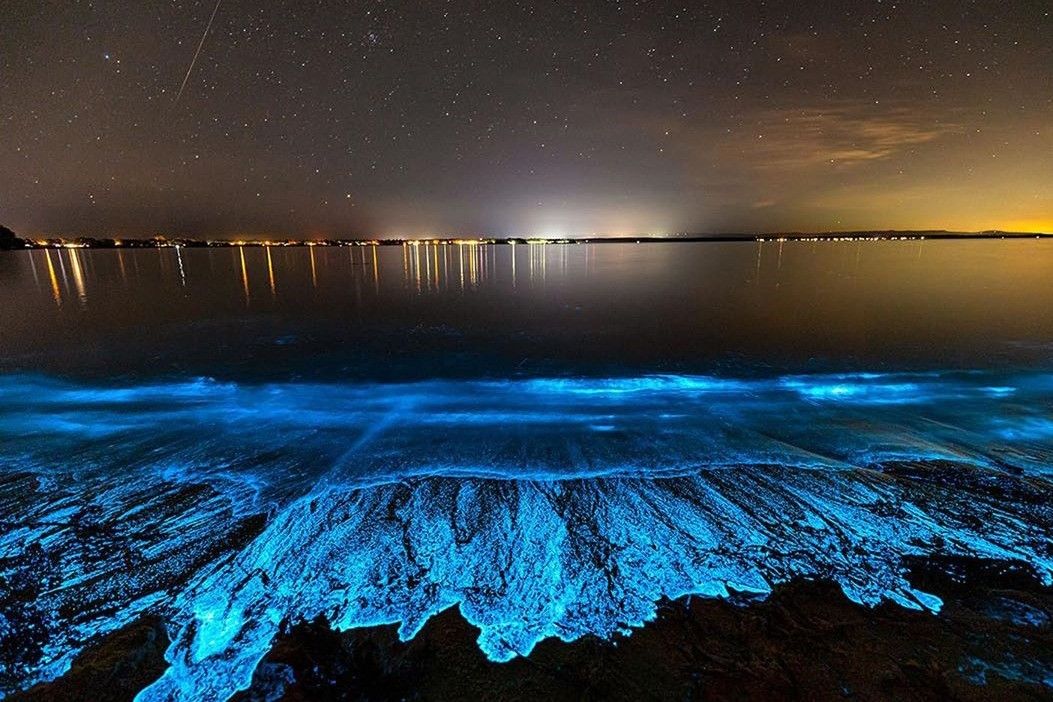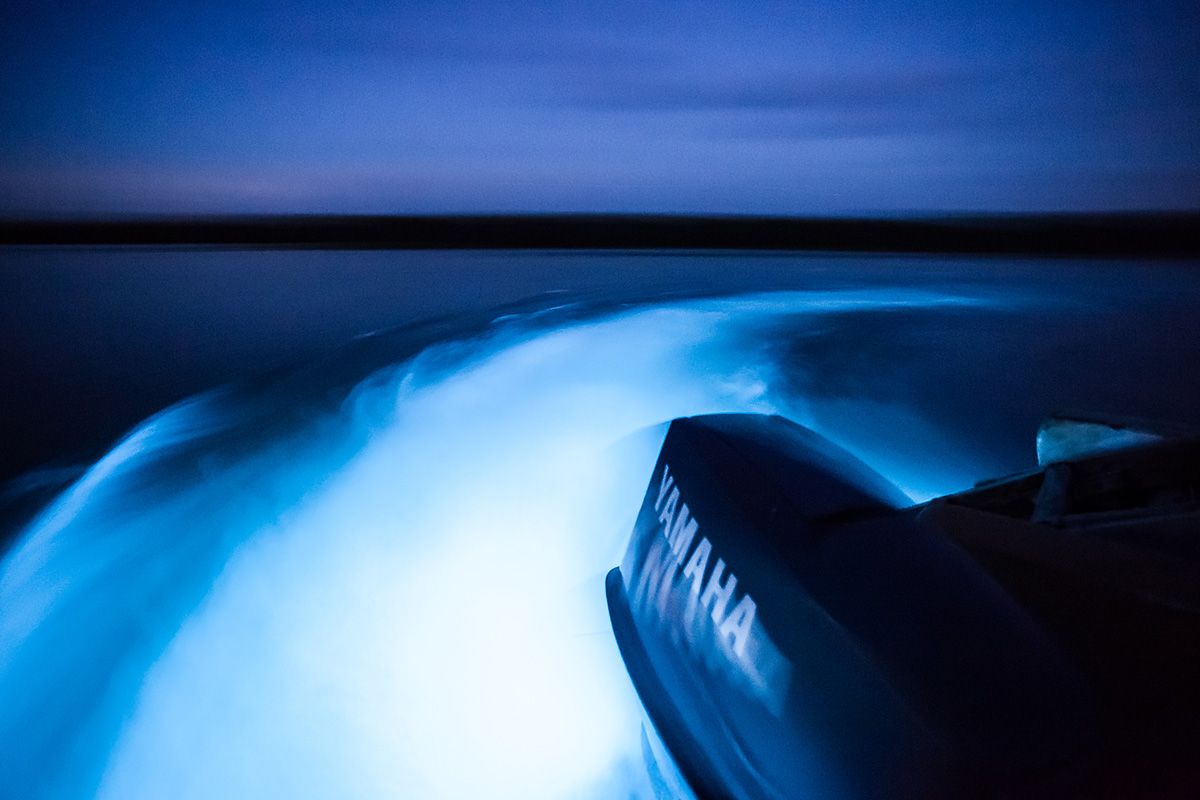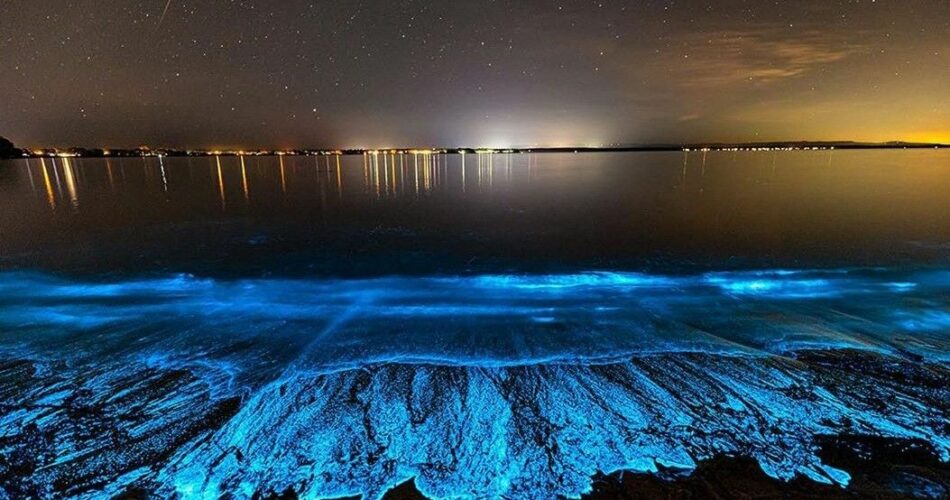Bioluminescence is triggered by movement, so it can be hard to spot from the shoreline, which is why many of these beaches offer boat trips where the waves light up, or allow you to swim amongst the twinkling lights. Although seeing bioluminescence on beaches is, without doubt, the most famous way to experience it, animals and plants that glow in the dark can also be found in habitats across the globe.
Vaadhoo Island, Maldives
Vaadhoo Island offers all of the luxurious resorts, dining, and water sports that other Maldivian Islands boast with the added bonus of a glowing sea. This tiny island, home to less than 500 people and many overwater bungalows, has become known as having a “Sea of Stars” due to its sparkling waters. The glowing phytoplankton here are particularly bright due to the virtually non-existent light pollution in this part of the Indian Ocean.

Koh Rong, Cambodia
A small but popular island off Cambodia’s southern coast, Koh Rong has become a backpacker’s haven, with its scattering of hotels, beautiful beaches, and clear water. Being fairly remote, the island has little running water or electricity and the mimimal light pollution creates ideal conditions for bioluminescent plankton to appear. Select companies and hotels offer boat trips to see the plankton, but the best way to experience it is to simply go swimming when there’s a clear sky and new moon.

Torrey Pines State Beach, California
The California coast is home to a huge range of marine life and on one sandy San Diego cove, you can witness the ocean change colors at night. The waters in Torrey Pines often see strong growth of bioluminescent algae in September and October. During the day, this causes a red tide, while at night the waters light up each time the waves crash, a phenomenon that can stretch as far as La Jolla.

Coles Bay, Tasmania
Coles Bay, on the small island of Tasmania just south of mainland Australia, is part of the striking Freycinet National Park. The park is home to the island’s best beaches, including Wineglass Bay and Honeymoon Bay, however for sea sparkle, Coles is the most popular. The microscopic organisms here glow brightly due to the lack of artificial light in the national park.

Manasquan Beach, New Jersey
Surprisingly, bioluminescence can be found on U.S. shores, with Manasquan Beach being one of the best places to witness it. Manasquan is one of the most popular beaches on the Jersey Shore with white sand and warm waters where locals go surfing and rafting during the day. At night, bioluminescent plankton appears in force, causing the long stretch of coastline to glow each time the waves crash in.

Luminous Lagoon, Jamaica
Luminous Lagoon is, unsurprisingly, named for the dinoflagellates which twinkle in the water at night. The lagoon lies on the marshlands near the town of Falmouth, where the Martha Brae River meets the Caribbean Sea and this fusion of salt and fresh water creates a perfect environment for bioluminescence to thrive. It's actually one of the top four places in the world to see it.

Matsu Islands, Taiwan
The Matsu Islands are a remote island chain off the coast of Taiwan, home to a phenomenon known as "Blue Tears." Glowing algae lights up late at night and can be clearly seen splashing against the island’s rocky outcrops and beaches. The islands can be reached by flight or ferry from mainland Taiwan, after which you can book a boat trip or guided tour to see the algae.

